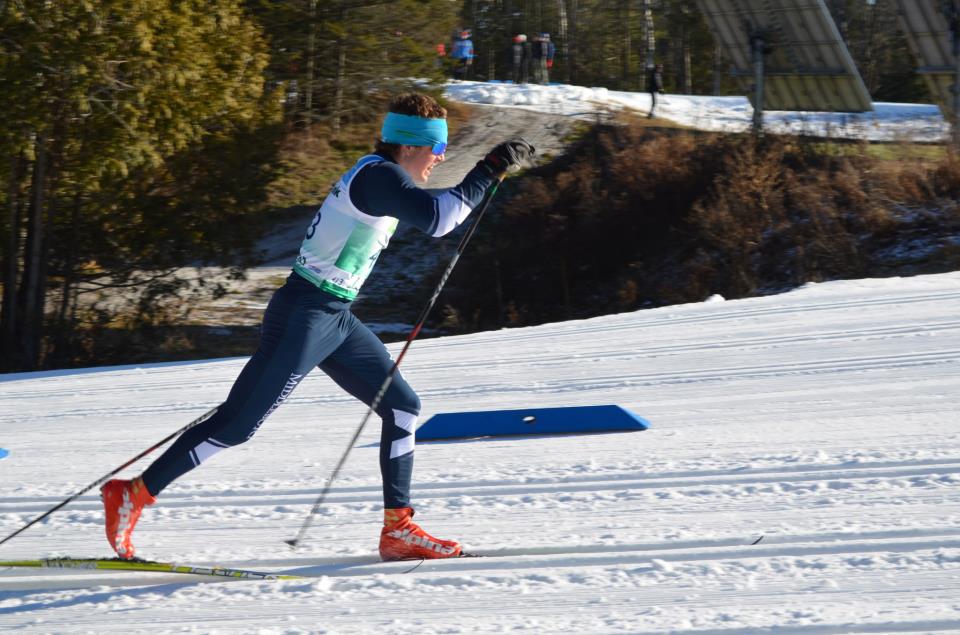
By Andrew Gardner, Middlebury College head coach
Tasked with the charge of finding a light-hearted post-holiday workout, I was tempted to include some of the most relaxed days of training for the Middlebury Ski team in this space. These were workouts that included on-snow games of “stuck in the mud,” a team photo scavenger hunt using iPhones and near-by landmarks, or a game of dodgeball with our alpine team. (Which, in fact, wasn’t so light hearted.)
The most important post-holiday workout, however, the piece that I think would be the most useful to share might also be the most straight-forward and the least revolutionary seeming. It’s a workout that I call “endpoints.” It is, basic, no-poles skiing. Here’s the rub.
All coaches, worth their coffee, prescribe no-poles skiing. Countless high school students can be seen on trails throughout the country waddling dutifully sans poles. The trick is, from junior to professional, to hit the end points.
Endpoints are the sharp ends of ski technique, the places where, if you’re a photographer, you try to capture in the frame. Most easily seen in V2 alternate (especially the well-known, hyper-extended, gradual downhill type, the arms extend back and forward as the legs fully complete a push off.) The force of the endpoints of technique are what define how fast a skier moves. In good no-pole skiing, there are no middling movements in the center of the stroke, no place to sit and rest. A skier hits the endpoints, driving from leg to leg in skate or classic technique. Arms are connected to the movement as though they had poles. Many junior coaches suggest skiing with poles held in place in front and while this is a fine basic teaching technique, it should evolve to clean arm movements as the skier progresses beyond learning basic upper body stability. The best place to employ no poles skiing: late in a workout. Deep in the space following a long ski that includes some depleting efforts.
As a workout it is harder than it appears to do really well.
Warm up: 30 minutes
Threshold efforts: 2 x 15 minutes with 10 minutes rest in between
Continue skiing: 30 minutes
No poles with a focus on hitting the endpoints: 30 minutes
Cool down: 15 minutes
Alex Kochon
Alex Kochon (alexkochon@gmail.com) is a former FasterSkier editor and roving reporter who never really lost touch with the nordic scene. A freelance writer, editor, and outdoor-loving mom of two, she lives in northeastern New York and enjoys adventuring in the Adirondacks. She shares her passion for sports and recreation as the co-founder of "Ride On! Mountain Bike Trail Guide" and a sales and content contributor at Curated.com. When she's not skiing or chasing her kids around, Alex assists authors as a production and marketing coordinator for iPub Global Connection.



